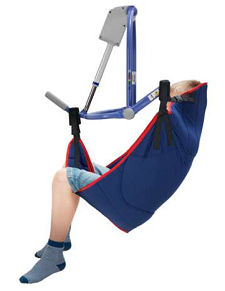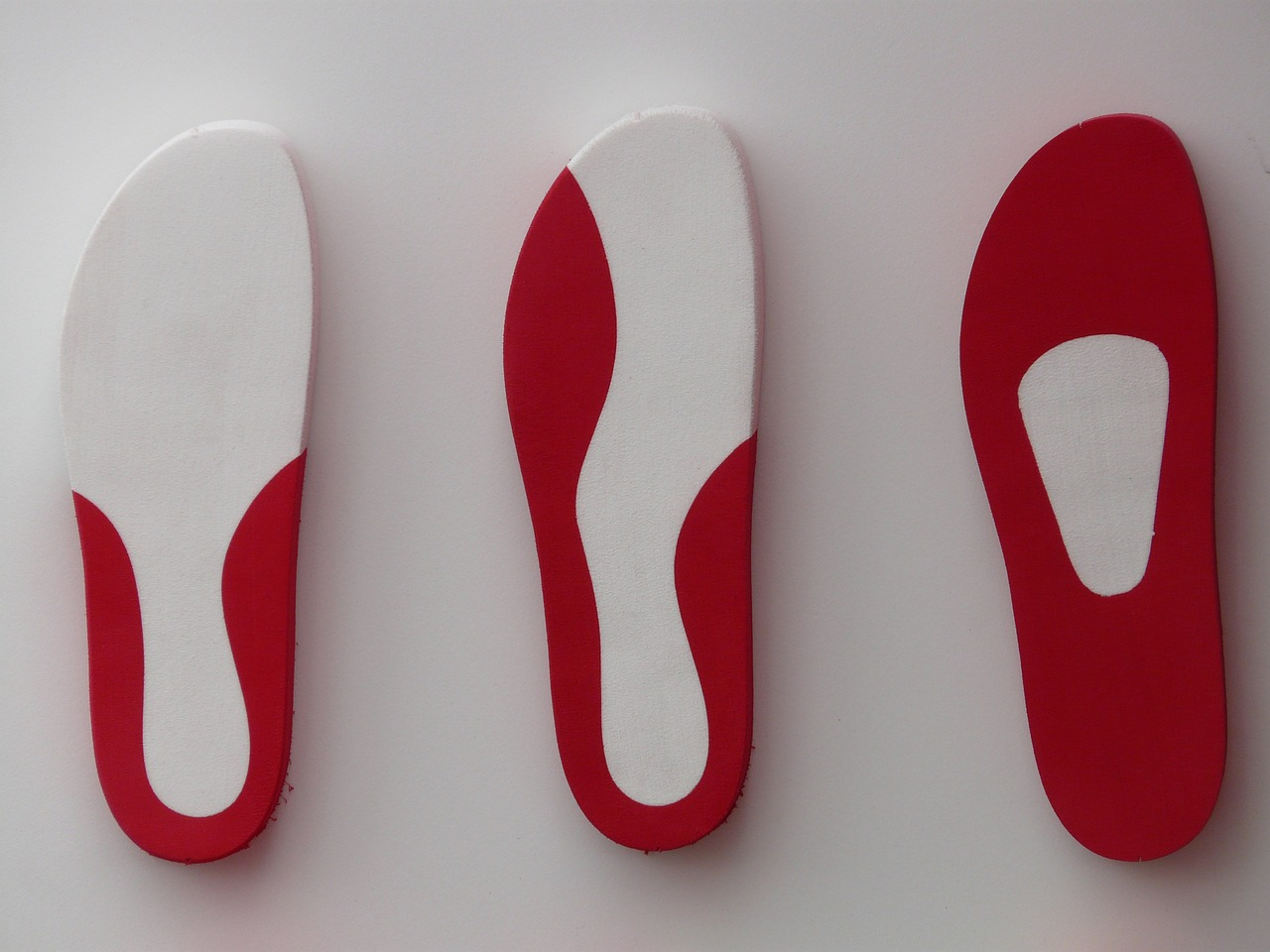Unit 9: Lesson 5: Ergonomics
Lesson 5: Ergonomics

Lesson 5: Ergonomics
| A passive sling used for patient transfers |
 |
Have you ever tried to lift something that was too heavy or that was an awkward shape? How did it feel? Most people have tried to complete a task at some point in their lives that was outside of the natural movement of their bodies. This may involve single actions that place stress on the body or they may be repetitive actions in which the body experiences strain that can create injuries over time. Ergonomics is defined as the 'science of fitting the job to the worker…Ergonomics is the practice of designing equipment and work tasks to conform to the capability of the worker, it provides a means of adjusting the work environment and work practices to prevent injuries before they occur.' Ergonomics are a concern in many different areas of the health sciences, from work at computers to work with patients. Injuries due to ergonomic issues cause a number of challenges for healthcare facilities, including high turnover rates, increased sick days, and increased costs. One study by the Bureau of Labor Statistics found that over 200,000 employees of nursing and personal care facilities are injured each year at work. This number doesn't take into account all of the injuries to employees in hospitals or other healthcare settings.
One of the major challenges for many healthcare workers is that patients are often very dependent on them. Some patients may not be able to move by themselves, and many patients need full or partial help with daily activities such as getting dressed, bathing, and eating. Helping patients in each of these ways can place additional stress and strain on the healthcare employee's body. A healthcare professional may try to lift too much, lift items in a way that places strain on their body, and force their body beyond its capabilities.
To reduce the risks associated with these types of tasks, healthcare professionals should have a solid knowledge of body mechanics, including how the body moves, its elasticity, and the torque or force of movement of which the body is capable. Body mechanics are the ways in which our bodies move during activity. Using good body mechanics, or using the natural ways in which our bodies move, can help us avoid injuries and strains. For example, when we lift an object from the floor, we should bend from our knees and hips (rather than the waist) and use our arm and leg muscles to lift the object from the floor. When we carry an object, we should keep it close to our bodies, and we should ask others to help us with objects that are too heavy to lift or carry alone.
Within healthcare settings, OSHA has made a number of recommendations that can help healthcare professionals assist patients without injuring themselves. One area of recommendation involves the use of assistive devices and designs that place less strain on healthcare professionals. For example, shower chairs that also fit over toilet facilities can reduce the need for healthcare professionals to make multiple transfers of patients in the bathroom area. Sling-type lifts in either overhead track systems or as stand-alone equipment can be used to lift patients from a bed into a wheelchair or from a chair into the bed. Sit-stand wheelchairs, which elevate a person from a sitting position to a standing position, can also be useful aids for helping patients move while incurring less strain and lower risk for the healthcare professional.
Although ergonomic equipment and designs have made many settings less dangerous for a healthcare professional's body, there are still situations in which professionals need to use their own body strength and movement to accomplish a task. In these types of situations, knowledge of body mechanics and a willingness to ask for additional help from other professionals can reduce the risk of injury. OSHA has recommended that nursing homes and other healthcare facilities eliminate the need for the manual lifting of patients and that all employees be involved in ongoing training and efforts to find solutions to tasks that may affect employee health.
